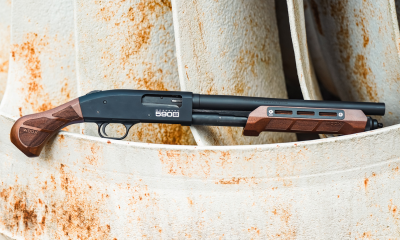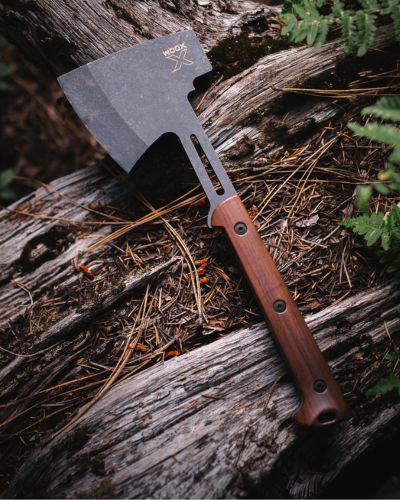Key Strategies to Boost Your Shooting Consistency
Table of Contents
Improving rifle shooting consistency requires a multifaceted approach, encompassing equipment setup, practice techniques, and physical conditioning. In the context of rifle shooting, accuracy and consistency represent two distinct performance attributes:
Accuracy is the degree to which a shooter's rounds hit the intended target area; it's the closeness of the shots to the bullseye or point of aim. Essentially, it's about hitting the right spot accurately, whether in a single shot or a group.
Consistency, however, refers to the shooter's ability to produce the same results under varying conditions over time. It's the repeatability of action and outcome, where the shots form a tight grouping irrespective of their position relative to the bullseye.
Both concepts are crucial for effective marksmanship, with consistency considered the stepping stone to achieving repeatable accuracy. Here's a synthesis of expert tips drawn from multiple sources to help you enhance your rifle shooting consistency skills.

Trigger Control
A fundamental aspect of shooting is trigger control. To test and improve this, you can balance an object like a coin on your rifle while dry firing. If the object falls, your trigger pull needs work1. Also, consider upgrading to an aftermarket trigger if yours is heavy or has excessive creep, which can disturb your aim just before a shot.
Finger Position:The position of your finger on the trigger affects the pressure needed to pull it. Placing the finger too high increases the pressure, while too low can make the trigger feel lighter. It's crucial to place your finger in the same spot for consistency.
Smooth Pull: Control the trigger by smoothly pulling it straight back, gradually increasing the pressure until the shot fires. To master trigger control, you must integrate all shooting fundamentals, such as aiming and breath control.
Avoid Jerking: Jerking or abruptly clenching the trigger hand can move the gun enough to cause a miss. The trigger should rest comfortably on the end of your finger, between the first joint and fingertip.
Dry Drills: Practice your trigger pull with dry drills, like the pencil method, which involves pulling a pencil straight back with the hand opposite your firing hand to assess your trigger technique.
Consistent Practice: Focus on a slow, smooth trigger pull that goes straight back. Such consistent practice, especially when shooting offhand, is crucial for developing a steady and predictable trigger pull.

Stock Stability
The rifle stock is crucial for accuracy and consistency. It should be rigid, stable, and impervious to environmental factors, whether it's made of wood, composite, or metal. A stable stock aids in maintaining the same position and point of aim with each shot.
Material and Rigidity: A stock should be rigid to promote accuracy and stable for consistency. Options include laminated wood stocks, hand-laid composite stocks, and machined-aluminum chassis. Avoid materials that are susceptible to environmental changes.
Proper Fit and Customization: Look for a stock with a vertical grip for comfortable field positions and an adjustable cheek rest for alignment. Ensure the fore-end can accommodate your barrel profile, particularly if you use a heavy match barrel.

Body Positioning
Adopt a body position that uses bone support rather than muscle strength to stabilize the rifle. This position should allow the rifle to point naturally at the target, minimizing the amplitude of any wobble.
Standing Position: Standing is the most challenging position and requires your feet shoulder-width apart with knees soft. The supporting arm should be perpendicular to the firearm, resting on the hip or rib cage for stability.
Prone Position: Although not directly quoted, the prone position is generally the most stable and involves lying flat on your stomach with the rifle supported by both your arms and possibly a rest. The body's alignment with the rifle is critical to minimize movement and improve consistency8.
OTHER TIPS YOU NEED TO KNOW
Proper Mounting of Scope: An improperly mounted scope can be a significant source of inaccuracy. Make sure you know the correct way to mount your sc.ope and start with quality bases and rings. Check out instructions or tutorials if you're unsure.
Visual Clarity: Ensure you have a clear view before pulling the trigger, especially when using a scope for long-range shooting. This may sound fundamental, but visual obstruction can lead to inconsistencies in shot placement.
Overall Shooting Stance: Work on every aspect of your stance, including grip, leg position, head position, and stock placement. Relaxation and correct breathing techniques are also critical, as tension can throw off your aim. Additionally, always follow through with your shot

Rifle Shooting Consistency Tips
| Aspect | Tip | Details |
|---|---|---|
| Trigger Control | Finger Position | Place the finger consistently on the trigger for uniform pressure and pull. |
| Trigger Control | Smooth Pull | Pull the trigger straight back with a gradual increase in pressure. |
| Trigger Control | Avoid Jerking | Keep the trigger pull smooth to prevent the gun from moving off target. |
| Trigger Control | Dry Drills | Practice trigger pull techniques with dry firing exercises like the pencil drill. |
| Trigger Control | Consistent Practice | Regularly practice a slow and deliberate trigger pull, especially when shooting offhand. |
| Stock Stability | Material and Rigidity | Choose rigid materials for the stock, like laminated wood or machined-aluminum chassis. |
| Stock Stability | Proper Fit and Customization | Select a stock with a vertical grip and adjustable cheek rest; ensure fore-end compatibility with your barrel. |
| Body Positioning | Standing Position | Stand with feet shoulder-width apart and knees slightly bent; support arm perpendicular to the firearm. |
| Body Positioning | Prone Position | Lie flat on your stomach with the rifle supported by both arms for maximum stability. |

In practice, each of these elements builds upon the other. Trigger control is the final, critical step in the firing sequence, but it is influenced by the stability provided by the stock and the shooter's body positioning. Stock stability ensures that the rifle is seated the same way for each shot, and proper body positioning maximizes the natural support structures of the shooter's body, minimizing fatigue and movement. Combining these elements into a consistent, repeatable shooting process is key to improving rifle shooting consistency.
SHOP BY purpose
Discover the perfect fit for your needs with our diverse collection of aftermarket stocks, tailored for a range of different purposes.
see all our stocksKeep Reading

Tikka T3x Hunter 16″ with WOOX Cobra Precision Build
A purpose-driven rifle system blending craftsmanship, precision, and performance—the WOOX Cobra + Tikka T3x Hunter 16″ build is made for the modern outdoorsman.

The Mossberg Maverick 88: A Working-Man’s Shotgun Raised to a Higher Calling
The Mossberg Maverick 88 evolves from rugged workhorse to heirloom-quality shotgun with Gladiatore walnut and aluminum furniture—performance and craftsmanship combined.

PSAK-47 GF3 & WOOX Forty Seven: Power Meets Heritage
The WOOX Forty Seven combines timeless craftsmanship and thoughtful design, creating an immersive, adventure-ready experience for those who seek the wilderness.

PTR 9CT: Stock, Grip & Rail Upgrades - WOOX 1913 WOODY
WOOX’s handcrafted American walnut stock, M‑LOK vertical grip and rail panels turn any rifle into a blend of classic craftsmanship and modern modular performance — perfect for hunters and shooters who value both heritage and function.
build your stock
Easily customize your rear stock for the perfect look, select recoil pads for optimized comfort, engrave personal touches, and choose forends to suit your shooting style.
Your rifle, your rules.

























